Recently, Managing Editor Judy Gonyeau had the chance to talk about automobilia and petroliana with Morphy Auctions’ Department Head and Expert for Automobilia and Petroliana, John Mihovetz. John started out at Morphy’s in his 20s before becoming the Department Head at the ripe old age of 31. His experience since childhood, along with his endless enthusiasm for the field of automobilia and petroliana, make him a perfect choice to head up this fast-growing vintage and antique genre with an expanding market across multiple generations.
What is your definition of “Automobilia” and “Petroliana”?
Automobilia is anything that advertises the automobile, whether it is for a brand like Chevy or Ford, or for the headlights that go on them. The same goes for petroliana – anything that promotes the brand or a specific product in the gasoline and petroleum markets.
Some definitions of automobilia include the car itself. Where is the break between automobilia and automobiles when it comes to collecting?
Automotive refers to cars – engines, dashboards, steering wheels, parts; but automobilia is advertising; anything that would be branded including accessories and brand-specific features. A Lalique hood ornament for a Rolls Royce, Chevy service neon sign, a Lincoln Mercury clock. They sound similar, but there are collectors who strictly go for cars and could care less about advertising, and visa versa. A lot of this is to each their own – “I only collect Chevy, Mopar, etc.”
Who are the buyers for these items?
The market is strange at the moment – we have the older group of guys interested in the Model As and Ts, but we have a new group coming in as young as in their 20s and 30s who are really into advertising like the Mobil sign with the giant Pegasus on it.
The spectrum is huge right now – the market ranges from 20 years old to 90 years old. It’s really exciting right now to have such a great range in age. For a long time, many of the older collectors were concerned about where all these things were going to end up and the younger just didn’t care. Now, the younger collectors are picking up the ball to preserve these items. This entire field has really picked up across the generations.
The newer collectors like anything advertising – especially graphic advertising. Even though they can’t really relate to a lot of it, there’s a beauty in that early advertising that I consider to be Americana, and it can be appreciated by anyone whether they are old or young.
I think it is design driven, and I think it is also the fact that cars/automotive are things that mark a milestone in our lives. Side by side with that is the advertising – people whose grandparents owned a service station and worked on cars, and that gets them involved – trying to rekindle the energy from those memories.
There was a time when people worried much of this would be lost – but of any of the genres of antiques, automobilia and petroliana is now one of the most younger-driven hobbies. The other areas of antiques have not picked up as strongly yet, but it will be interesting to see how this younger market affects the industry as a whole.
The market for the early “Classics,” the Model A or the Stanley Steamer or the Chrysler Touring cars continue to hold interest, but what do you see as the next round of classic automotive and automobilia?
Well, this would really be my own guess.
There was a really big jump in interest for the American muscle cars in the early 2000s, and you are still seeing a huge demand for that but it has to be pristine original. As far as longevity, I would think the older Big Three -Dodge, Chevy, Mopar-will continue but a lot of the 57 Chevys are fading away.
Do you feel the various programs about finding, repurposing, and decorating with automobilia and petroliana have had an affect on the market?
These shows have drawn more attention to the subject, and while there is a mixed opinion about the content, they have been much more positive than negative. With regard to using elements as part of home design, they have gotten the general population interested.
Many prices are sky rocketing on items that may not have commanded such pricing in the past. Many people want to have a crusty old Mobil Pegasus sign on the wall because of the design impact it makes in a room. This new crowd of people getting into [automobilia] is going to collect better and better things.
This has been a very blue collar hobby, and while some may complain about prices going up, they should also realize the value of their own collections has increased as well, and that’s just how the market works at any given time.
What do you recommend to people entering the market who don’t have hundreds of thousands to spend, but may have a couple thousand to buy something special?
I get this question all the time from new collectors, because people know that I stare at this stuff 24 hours a day when doing my research and assessing value to auction items.
I’ve offered a lot of advice to people over time, but advice was offered to me, too, when I was starting out. It comes down to the old adage “Knowledge is Power.” You have to have the knowledge of what this is before you spend your money. And there is a great network of people out there who love to share their information from the past 30-40 years with younger buyers.
Nothing is worse than when someone shows me what they spent money on without asking about it and it turns out to be a reproduction or something that is not holding any value. When I see these types of buying mistakes being made it is because they don’t know what they are looking at – they should be asking “What should I buy at this sale?” or “How much should I spend on something like this?” from a professional collector or someone like myself. It is important to have a network of people to turn to.
First, what are you trying to do? Are you looking to collect a certain brand? Are you trying to make money at this? Or are you looking for a piece of art?
Once you decide why you want to buy it is important to know what you are planning to purchase. Having a plan is important because at the end of the day, you really want to have top quality, not just quantity – you could have a barn full of stuff that everybody else has or you could have something that means something to you, with that “cool” factor – a story you can relate to or something that is unique.
Some buyers may only be looking to buy things to fill up a wall, but having the knowledge, having the eye for quality, and continually networking with people can only enhance what you buy.
Where do the professionals, like yourself, turn to for information?
Just in the past ten years, the power of the internet has opened up the power of learning about so much, but networking with other experts and well-versed collectors can help avoid a lot of mistakes.
I’m one of the younger people involved in this hobby. When I was 15, 16, I hung around with an amazing group of guys who were veterans in this hobby and allowed me to sit around and pester them all day long.
I would come in asking a million questions about their collections. They were an ocean of knowledge. People need to know they can benefit from the stories, information, and experiences offered for free from others who are into this. They are more than happy to share with anyone who wants to get involved in this field.
What are some resources anyone can tap?
One online site, oldgas.com, is a network of guys who can answer questions about particular brands, items, and the history around them. Facebook is another place to find groups who have open discussions.
Car shows are a great way to meet and greet, buy and sell, ask questions, and network.
In conducting auctions across the country, do you find regional differences play a role in value?
100%! Petroliana is very regional. At our California event you will see a lot of west coast brands – Mohawk and Signal, in the Midwest, Jayhawk, and in the east it’s Richfield and Texaco. The more regional, the rarer the pieces can be, and that can increase value.
What items are Petroliana guys itching for?
In our upcoming October auction, we have Musgo 48″ gasoline sign with beautiful graphics and a great piece of folklore about the piece and how it was found. There are a lot of really beautiful unique pieces in amazing condition, like Red Had pieces from the 1920s that are hard to find; a lot of quirky and weird early independent brands from before the really big brands like Shell, Mobil. Quality, condition, and rarity are the holy trinity of what to buy.
What role does the backstory/provenance play? The lore?
Provenance increases value, yes, but not as much as quality. The collection we are selling in October comes from someone who only bought the best of the best – the fact this collection is for sale brings out the “I can’t believe this is for sale!” buzz. Having the collection from a person who has a reputation for high-quality buys over time adds to the backstory because you know about him, about his standards, and now you can get your hands on something he felt was worthy.
What makes for a good auction?
We are picky about what we take for consignment, and what makes a good auction is “something for everybody” – you can buy a premiere beautiful piece for $5k and you can have one for $75k. High quality items can be bought in any price range, and you can buy run of the mill items all day every day, but you can get a premiere piece within any given price range when you seek out quality.
Anyone can own something original and real, and that is the big draw – originality and that look of authenticity – the patina and originality.
Originality is something Morphy strives for – I came here because I want to sell original and really clean – the real thing.
Are there some hidden gems in the October auction?
Some of my favorite pieces include a 48″ Red Hat Royal “400” sign. It is the best example that I’ve seen come to public sale and I estimated it at $35,000-$50,000, but I would not be surprised to see it go much higher.
Marathon product 30″ porcelain double-sided sign; extremely rare sign in this size. It is graded a 9.75 on one side and 9.0 on the other, estimated at $5,000-$8,000 but it could go for much more.
There is also a Wayne roman column gas pump with some incredible original restoration. It is a beautiful piece estimated at $25,000-$35,000.
There are also many signs estimated in the $1,000-$4,000 range that offer exceptional quality and a good price.
This sale also includes a wonderful selection of Lalique glass hood ornaments, classic gas globes with some rare, regional examples, and some great neon.
It’s always fun to grade stuff that I love. On auction day, the most important thing I do is help buyers through the day – offer my opinion when answering questions like “What’s the chance I’ll see another of these?” “What is the market for this item into the future?” I have no problem with helping anyone with information on how the auction can work for them with some basic advise, like “don’t let it slip out of your hands for this number” because in the heat of the moment, judgement goes out the window. Helping bidders know when to be patient and when to push it is important and different for each buyer.
People get a kick out of the auction floor and watching Dan work and get the crowd going, especially when it comes down to the showdown and what guys have their eyes set on. Working and connecting with buyers and sellers is part of why I love what I do.
John Mihovetz is the Department Head and Expert for Automobilia and Petroliana at Morphy Auctions. There will be a special Automobilia and Petroliana auction at Morphy’s Denver, PA location October 8, 2018. Learn about online bidding availability and download the auction catalog at morphyauctions.com

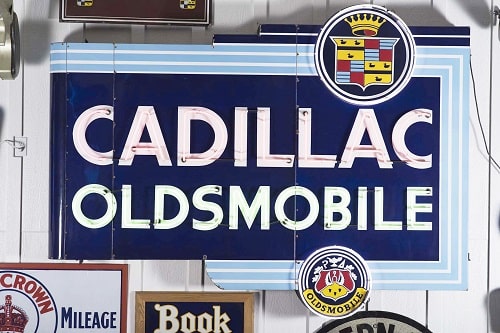
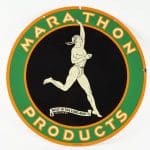
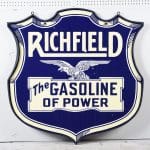
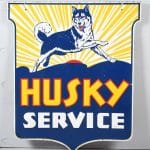
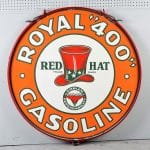

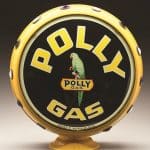
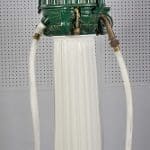
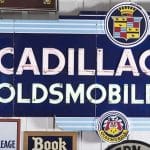



Related posts: